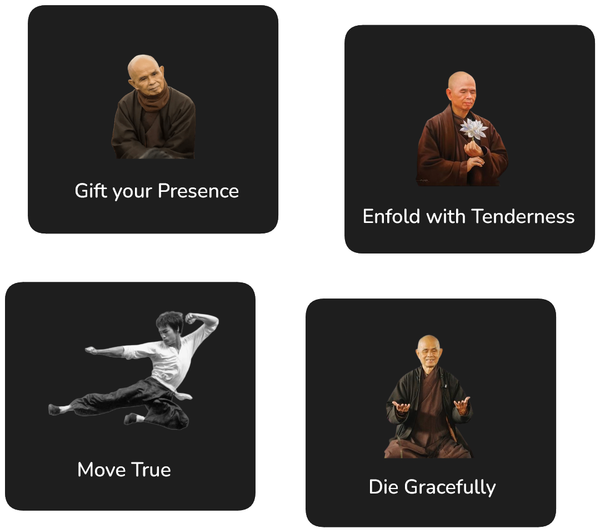Practice: Shepherding Awareness
Proposes a meditation practice focusses on bridging attention and awareness.

I've recently delved into the connection between attention, awareness and mindfulness. I believe these are intimately associated with meditation; as meditation aids in achieving mindfulness by helping us gain mastery over our attention.
There's a wealth of information on the benefits of meditation including its capacity to enhance mindfulness and manage stress levels. Many resources also provide how-to guides on practising meditation. However, what seems to be missing is an explanation of how specific practices achieve the desired results. I don't question that these practices work effectively. But I always strive to understand the reasoning of how different elements of a practice contribute to fulfilling our desired outcomes.
I believe understanding the dynamics of attention, awareness, and mindfulness can help us comprehend how meditation works and guide us to utilise it effectively.
In my previous article, I mentioned that to master our attention, we need to consider both attention and awareness together. They both play a part in helping us control our thinking processes.
Our thinking can take two different modes. One is rational and directed, while the other is more intuitive and holistic. To fully utilise our mental capacity, we need to engage in both forms of thinking and integrate them efficiently. This integration, I believe, ultimately leads us to mindfulness. For further insight into these thinking styles, refer to Kahneman's book, "Thinking Fast and Slow".
I hypothesise that meditation's success lies in its ability to support us in understanding and mastering these two ways of thinking. In meditation, we are often asked to focus our mind on certain elements such as our breath or specific sensory impressions, which connects to the rational and directed thinking path. Eventually, we are prompted to widen our awareness, to acknowledge our thoughts or impressions without delving deep into them, and then to let them go.
Meditation can be practised in various ways. One of the most poplar approaches to meditation is rooted in the Vipassana tradition. Vipassana is an ancient Buddhist meditation practice, derived directly from the Satipatthana Sutta (Foundations of Mindfulness), attributed to the Buddha himself.
Taking inspiration from the Vipassana meditation, I've crafted a unique meditation practice for myself, which I call "the shepherding of awareness".
This is based on the understanding that while we can manually direct our attention, our awareness operates subconsciously and is more difficult to manipulate. I believe that attaining mastery over our thinking involves controlling our awareness, which directly links to the intuitive and holistic thinking approach, which is immensely powerful compared to the rational and directed way of thinking.
With no more delay, let's walk through my practice.
Step 1: Preparation
Begin by finding a comfortable position. It could be sitting, lying down, standing or anything that suits you. Then, close your eyes. Don't spend too much time worrying about your position or location.
Step 2: Breathing
Start by focusing on your breath. At this stage, taking deep and measured breaths can help you anchor in a peaceful and relaxed state of mind.
For more information, see my article on Breathing.
Step 3: Sensory exploration
After you've settled, investigate what the Buddhist call the Six Sense Doors—seeing, hearing, smelling, tasting, touching, and thinking about/mind. Notice what you perceive through each of them.
Have a specific order for examining your senses. For instance, you might start with sight, then hearing, and so on. For a more detailed exploration of the six sense doors, refer to this video.
Step 4: Body scan
Next, turn your attention to your body. Specifically, focus on areas experiencing discomfort, pain or tension.
It can help to direct attention to specific body parts and imagining them becoming heavy, warm and relaxed, see Practice: Body Mindfulness.
Step 5: Connection
Feeling connected to our environment, people and the broader universe is crucial for wellness as I have argued in my article on Life Mastery. This connection can be with God, the world or anything of personal significance. Here are a few suggestions.
- Feel the gravitational pull, which connects you to the earth. Gravitation can only be created by the immense collection of particles that make up the entirety of our planet. Through gravitation, you are connected with each and every one of them.
- Consider your inhales and exhales, which link you to the atmosphere by exchanging oxygen and carbon dioxide.
For further ideas, see my practices on Interbeing and Irrelevance and Impermanence.
Step 6: Spirit
The next phase involves a connecting to the elusive realm of spirit. It's about nurturing our connection to the things we can't see, touch, or completely understand. However, achieving this state should not be a necessity but a possible valuable addition to meditation.
Why these Steps?
This meditation practice involves connecting attention, awareness and mindfulness - all under the theme of 'shepherding our awareness'.
We first want to anchor ourselves in the here in now. For this, we focus our attention on our breath - a straightforward exercise.
Then we direct our attention to our senses. Our senses exist in the here and now, and the more we bring our awareness to that, the more peaceful and calm we find ourselves.
The body scan exercise aligns with this aim, for our bodies too exist in the present moment. All of these first steps are very much driven by our directed attention, but we slowly expand its focus; from just our breath, to all our senses and our body.
The final two steps, focusing on connection and spirit, are about unleashing the power of our awareness. Often, our connection to the world, people, and the universe evoke complex feelings and thoughts - things that are difficult to capture in directed thought. They can be best understood through our intuitive, more-encompassing awareness.
By channelling our awareness to understanding our place in the universe and marvelling at its beauty, we can convert our meditation practice into a source of joy and energy - contributing to the betterment of our lives.
A Final Note
Like many posts on this blog, I'm still refining this practice, and there is a high chance of its evolution. However, I hope it can be of help and I would appreciate your comments, feedback or questions.





